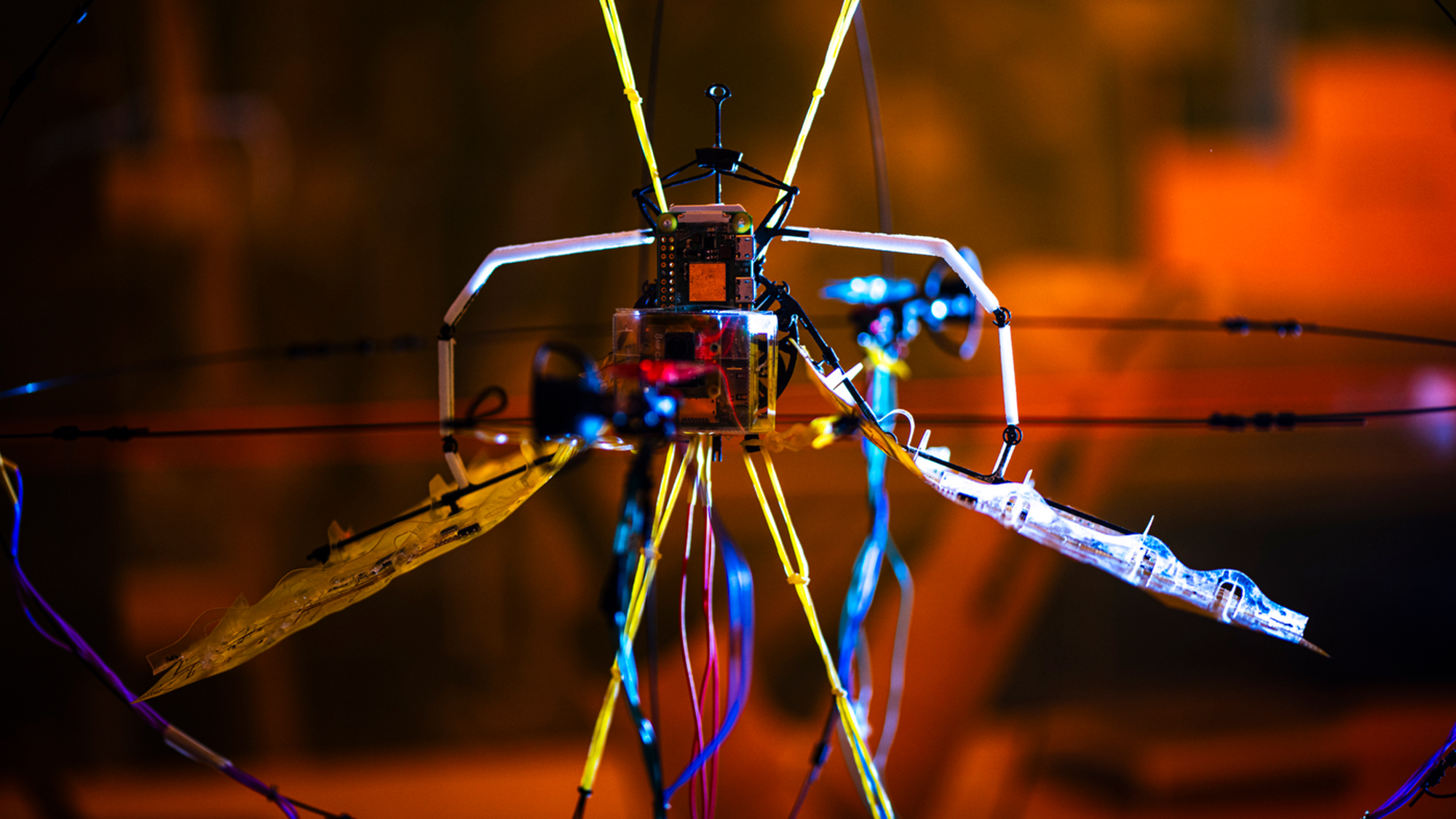

Bats are amongst the animal kingdom’s most unorthodox fliers. Unlike birds, the furry, flying mammals can dynamically reshape and morph their wings to achieve maximum force and hover in place. The soft membrane of their wings, which more closely resembles a human arm than a bird’s wing, is also extremely flexible, which means bats can contour themselves to squeeze into tiny corridors.
Now, researchers from Northeastern University are leaning on those unique elements and applying them to a fully autonomous flying drone called “Aerobat.” Eventually, they believe this bat-inspired robot could be used to navigate sewer tunnels, caves, and other tight corridors largely off-limits to current flying robots.

Bats are ‘fundamentally different’ fliers
The researchers, who published their findings in the International Journal of Robotics Research late last month, used a combinator of rigid and soft 3D-printed materials to form the basis of Aerobat’s wings. Just like its real-life doppelganger, Aerobat’s thin, flexible wings expand on downstrokes and collapse on upstrokes. This movement, according to the paper, creates “periodic air jets” that are used to maximize the net positive aerodynamic force. The result is a highly efficient method for maintaining flight.
“Some literature refers to bat flight like dancing in the air,” Northeastern associate professor of electrical and computer engineering and paper lead author Alireza Ramezani said in a statement. “They don’t just fly, they dance in the air with great composure. They try to manipulate their fluent environment and that’s unique to bats.”

Aside from its wings, Aerobat uses a camera to determine its position and orientation. A set of onboard computers are then used for automatic flight control. A human still needs to manually decide Aerobat’s final destination. Once that’s determined, however, the robotic bat will flap its wings and navigate toward the destination fully autonomously. Aerobat can then hover in place and use a set of sensors to collect data about its environment.
“The whole idea is to design bio-inspired drones that can operate inside extremely tight and confined environments,” Ramezani said. Ramezani has spent the past three years studying the way bat moments could be incorporated into a flying device. A previous prototype version of Aerobat, called “Bat Bot” was featured in a 2017 Nature article.
Modern robots take inspiration from living creatures
Scientists are no strangers to leaning on nature for inspiration. Previous bird-inspired quadcopters have used hawk-like claws and toe pads to grab ledges and smoothly land just about anywhere. Other researchers have already developed robots based on daddy long-leg spiders, cockroaches, dogs, and long-extinct sea creatures, just to name a few. In each of these cases, biology’s naturally occurring elegance of movement and function is helping researchers solve real-world problems.
For Aerobat, that could mean one day being used to collect data from sewer systems or other difficult-to-access infrastructure areas. The researchers say their robot could also be outfitted with a depth-sensing camera for environmental monitoring. If successful, Aerobat would join a growing list of new robots being used to monitor nuclear facilities and other hazardous areas largely inaccessible to humans.
“The point is we are surrounded by confined environments, and we don’t have fast robots that can help us with remote sensing and other applications,” Ramezani said.